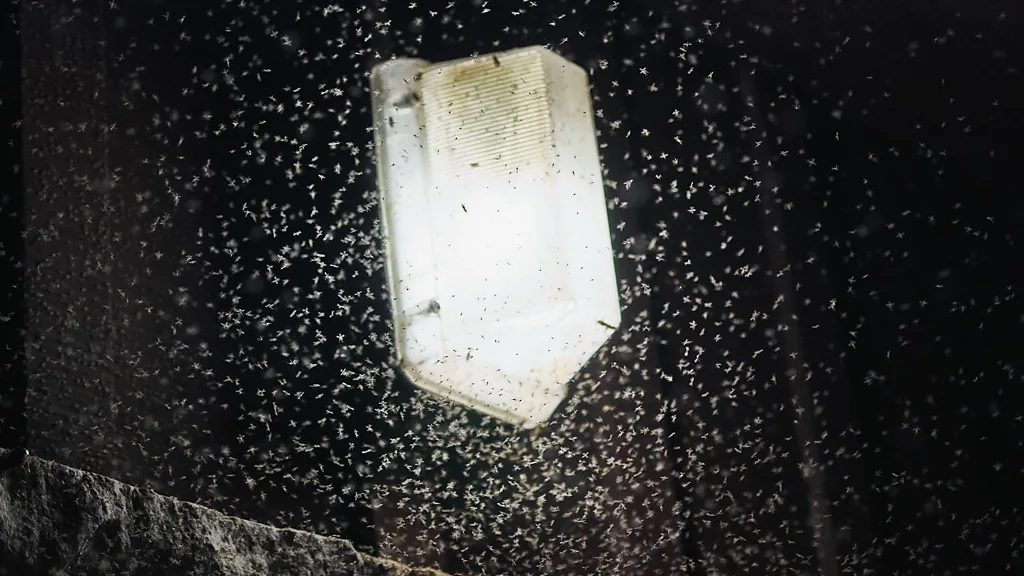
Mosquitoes are often regarded as the bane of summer evenings, buzzing around and delivering itchy bites that can ruin any outdoor gathering. However, their impact goes far beyond mere annoyance. With over 3,500 species, mosquitoes have mastered the art of survival, thriving in almost every corner of the globe and playing a significant role in transmitting deadly diseases. This article explores the relentless march of mosquitoes and the challenges they present to global health and well-being.
The Resilient Survivors
Mosquitoes have been around for over 100 million years, adapting to various climates and environments. Their ability to lay eggs in minimal water sources, such as a rain-filled bottle cap, underscores their resilience. Female mosquitoes, responsible for the itchy bites, need blood to nurture their eggs, making humans and other animals prime targets. This blood-feeding behavior has enabled mosquitoes to spread, sometimes inadvertently hitching rides to new territories via human travel and trade.
A Global Health Threat
Mosquitoes are not just a nuisance; they are vectors for some of the world's most dangerous diseases. The World Health Organization (WHO) estimates that mosquito-borne diseases, such as malaria, dengue fever, Zika virus, and West Nile virus, affect millions of people each year, causing significant morbidity and mortality.
Malaria
Malaria, caused by Plasmodium parasites transmitted through the bites of infected Anopheles mosquitoes, remains one of the deadliest mosquito-borne diseases. Despite considerable progress in reducing malaria-related deaths, it continues to claim the lives of over 400,000 people annually, with children under five being particularly vulnerable.
Dengue Fever
Dengue fever, transmitted primarily by the Aedes aegypti mosquito, has dramatically increased in cases over the past few decades. The WHO reports that dengue is endemic in over 100 countries, putting about half of the world's population at risk. Severe dengue, or dengue hemorrhagic fever, can be fatal if not managed promptly.
Zika Virus
The Zika virus gained global attention during the 2015-2016 outbreak in Brazil, which was linked to severe birth defects such as microcephaly. Although Aedes mosquitoes primarily transmit Zika, the virus can also spread through sexual contact and from mother to child during pregnancy.
West Nile Virus
West Nile virus, primarily by Culex mosquitoes, affects humans and animals. While most infected individuals are asymptomatic or experience mild flu-like symptoms, severe cases can lead to neurological complications and even death.
The Perfect Breeding Grounds
Mosquitoes thrive in warm and humid conditions, so regions with tropical and subtropical climates face the highest burden of mosquito-borne diseases. However, climate change and increasing urbanization are expanding their range. Warmer temperatures and changing precipitation patterns create new breeding grounds, enabling mosquitoes to establish populations in previously inhospitable areas.
Urbanization also contributes to the mosquito menace. Rapid, unplanned growth in cities often leads to better sanitation and adequate waste management, providing plenty of stagnant water sources for mosquitoes to breed. Additionally, the proximity of humans in urban settings facilitates the transmission of diseases.
Combating the Mosquito Menace
Efforts to control mosquito populations and prevent disease transmission are ongoing, but they face several challenges. Traditional methods, such as insecticide spraying and the use of mosquito nets, remain essential tools in the fight against mosquito-borne diseases. However, mosquitoes can develop resistance to insecticides, necessitating the development of new and innovative strategies.
Genetic Approaches
One promising avenue of research involves genetic modification. Scientists are exploring techniques to release genetically modified mosquitoes that are either sterile or carry genes that reduce their ability to transmit diseases. For example, the release of genetically modified Aedes mosquitoes in Brazil and the Cayman Islands has shown promise in reducing mosquito populations.
Biological Control
Biological control methods, such as introducing natural predators or using bacteria like Wolbachia to infect mosquitoes, are also being investigated. Wolbachia-infected mosquitoes have a reduced capacity to transmit diseases like dengue and Zika, providing a potential long-term solution.
Public Awareness and Community Engagement
Public awareness and community engagement are crucial components of mosquito control efforts. Educating communities about eliminating breeding sites, using protective measures, and seeking prompt medical attention for symptoms can significantly reduce disease transmission.
Conclusion
The relentless march of mosquitoes presents a formidable challenge to global health. These tiny insects have adapted to survive and thrive in various environments, spreading deadly diseases affecting millions worldwide. Combating the mosquito menace requires a multifaceted approach, combining traditional methods with innovative technologies and community engagement. By working together, we can mitigate the impact of mosquitoes and protect the health and well-being of communities around the globe.
Are you interested in learning more about mosquito control and prevention strategies? Stay informed and join the conversation by following our updates and participating in community initiatives. Together, we can make a difference in the fight against mosquito-borne diseases.


0 Comments